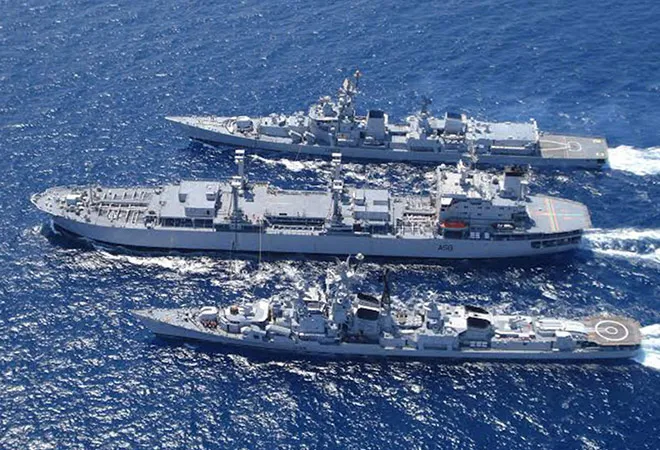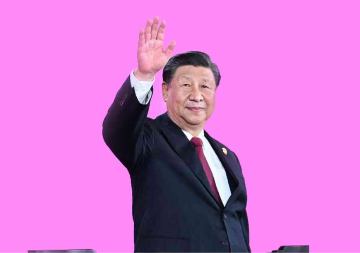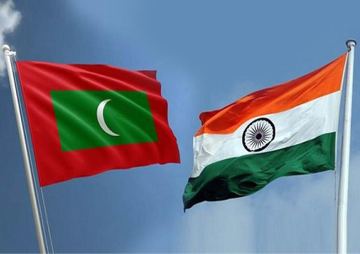
America on the ballot>
Starting from Quadrilateral Security Dialogue’s initial pitch in 2007, its subsequent lull and subsequent revival as Quad 2.0, the anticipation over the mini-lateral grouping has come a full circle. Given China’s recent assertiveness during the coronavirus pandemic, conversations over the Quad biting the bullet on confronting Chinese assertiveness have reemerged.
The great unraveling ushered by the COVID-19 pandemic, along with Beijing’s growing assertiveness on multiple global fronts like the standoff between India and China, have proven to be an inflection point for a restructuring of the US outlook in the Asia-Pacific and by inference even for the Quad. To that end, restoring balance in the Indo-Pacific is imperative to the Quad’s broader goals for the region. The potential inclusion of Australia in the Malabar naval exercise – a trilateral exercise between the US, Japan and India – would see the completion of the militarisation loop, and would actualize Quad cooperation in the region whilst further stabilising the balance in the Indo-Pacific.
This also means the furtherance of India’s centrality in the Quad. As such, India’s cooperation with the US forms the rubric of the intra-member partnership between the Quad countries with at least two trilateral mechanisms within the Quad and 2+2 engagements between all the four members.
Trump presidency & Quad 2.0
While the idea of the Quad 2.0 emerged in the 2017 ministerial-level meeting of the Quad countries, new areas for cooperation that have emerged as a result of the ongoing pandemic have provided Quad members with the impetus to convene weekly consultations and share best practices. In its new avatar, the Quad members had already found increased convergences and reasons to cooperate with other nations of the Indo-Pacific through a Quad Plus mechanism as well. Now, the pandemic has ushered such trends more rapidly, especially amidst reports of Australia’s inclusion in the Malabar exercise, India’s ongoing standoff with China at the LAC and the US resolve to counter China more aggressively in the Pacific.
This comes against the backdrop of the recent past, wherein the Trump administration has also deployed US forces more aggressively in the South China Sea and conducted simulation exercises with the Quad countries including in the Indian Ocean. Under Trump, the US has upped the ante by increasing the number of Freedom of Navigation Operations (FONOPS) in the South China Sea to an unprecedented high. While the other Quad members are still circumspect, the Trump administration has decided to take China head-on through a two-pronged approach. First, by championing the cause of a free and open Indo-Pacific (particularly led by US Secretary of State Mike Pompeo), and second, by a confrontationist approach that rejects all claims of China to “offshore resources across most of the South China Sea” as “completely unlawful”.
Despite these strong unilateral projections, the US has acknowledged that such actions alone cannot be a strategic substitute for a sustainable long-term regional strategy of the Quad. Of late, China has scrambled to open multiple fronts of hostilities amidst both domestic economic pressure and growing external clamour for an accountability probe over the spread of the coronavirus pandemic. Given this development, the Indo-Pacific powers, led by the Quad nations, have felt increasing need to conjoin their interests in the region. For instance, on 27 June, warships from the Indian Navy and Japanese Navy (Japan Maritime Self Defense Force) conducted a joint exercise in the Indian Ocean. On 20 July, a US Navy carrier strike group, led by USS Nimitz, conducted maritime drills with the warships of the Eastern Fleet of the Indian Navy in the Indian Ocean – a visible manifestation of the strength of the Indo-US convergence.
Trump’s bet on India
With Joe Biden snapping at the heels of Donald Trump in the US presidential race, Trump's show of strength with China remains one of his best cards in the November elections this year. As the US approaches the peak of its election cycle, its stakes in the Indo-Pacific, specifically the methods it uses to counter China effectively, remain tethered to its cooperation with India.
Irrespective of the results of the November election in the US, the Trump administration has established some new grounds for engaging with India that will be difficult to reverse. The currently favorable attitude of the US towards India will likely continue in the event of a Biden presidency, who has declared that developing partnership with India will be a priority if he is elected. As such, the COVID-19 pandemic has created a wider spectrum of cooperation between the two sides with frequent interactions between India’s External Affairs Minister, Foreign Secretary and their counterparts in the US. The recent hint by Indian Commerce minister that India and the US could have a limited trade deal also augurs well for not just the bilateral relationship but also regional dynamics, given India’s current trade dependence on China, the former’s willingness to lessen trade deficit with the latter as well as for India’s decision to remain out of large regional trade agreements like the China-led Regional Comprehensive Economic Cooperation (RCEP).
The past decade has witnessed immense debate on the nature of great power relations India should have in light of its great power ambitions and amidst shifting power balance engendered by the rise of China. Central to this debate has been the question of how India should recalibrate its relations with the US. In many ways, the Quad has promised to be the experimental platform for the US’ reengagement with Asia; both by shaping the contours of US Indo-Pacific strategy, and by furthering a template for US-India cooperation in the Indo-Pacific region. With the US’ embrace of India as an Indo-Pacific power, Trump’s decision to make India a Major Defense Partner and the elevation of bilateral ties to a “comprehensive global strategic partnership” have all created ample space for vertical expansion of US-India ties.
Certainly, the persistent domestic compulsions and differing strategic outlooks between the two nations could prevent US-India ties from being fully realised. Most recently, the nuanced difference that emerged between Indian External Affairs Minister S. Jaishankar’s assertion that the US needs to learn to work with a more multipolar world and “go beyond” alliances, and the statement by US Secretary of State Mike Pompeo which focused on coalition building to counter China, points to structural impediments in the lateral expansion of US-India ties through multilateral fora — despite gains with vertical ascension under US-India ties.
However, over the past decade, the need for broader US-India cooperation on strategic, economic and political issues has become more pronounced, leading to the removal of some conventional barriers. If anything, the COVID-19 pandemic has accelerated that trend. Given the intensification of US-India cooperation, accelerated by the pandemic, it appears that the shadow cast by this bilateral cooperation on the Indo-Pacific will get longer.
Hence, while Indo-US relations form the base of a reformed Indo-Pacific balance of power, India agreeing to include Australia in the Malabar exercise will be an important step in consolidating the regional balance in the favour of the Indo-Pacific countries, but more importantly, a step that will multi-lateralise the balance of power in the Indo-Pacific.
The views expressed above belong to the author(s). ORF research and analyses now available on Telegram! Click here to access our curated content — blogs, longforms and interviews.




 PREV
PREV


